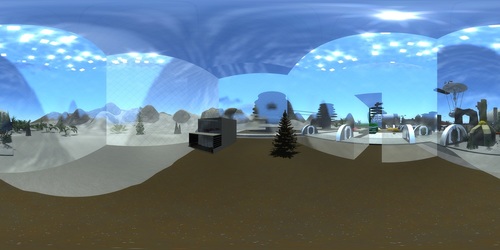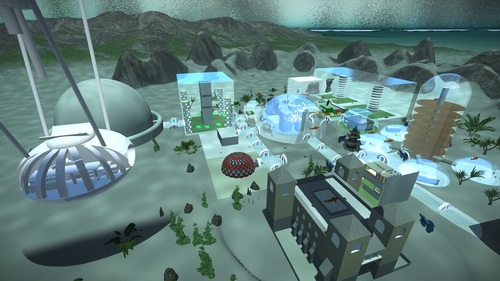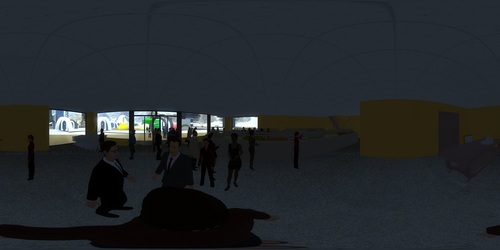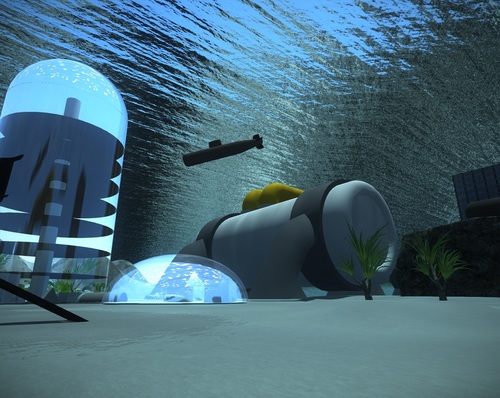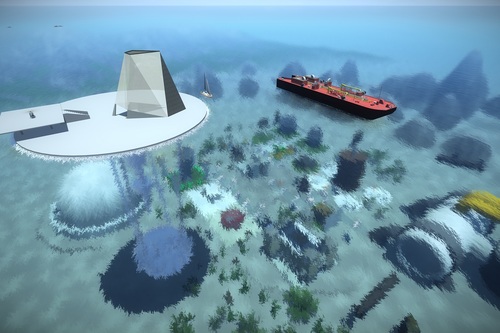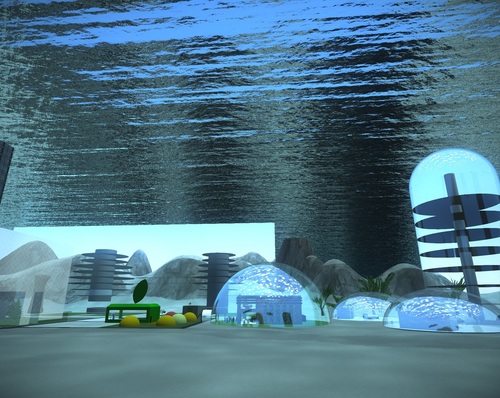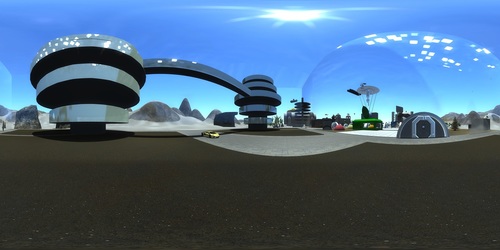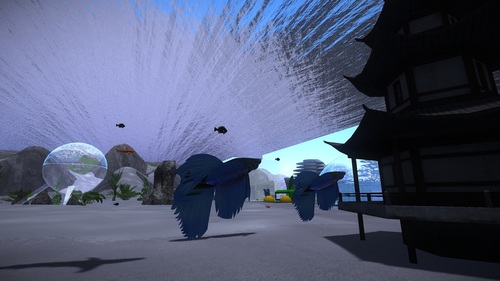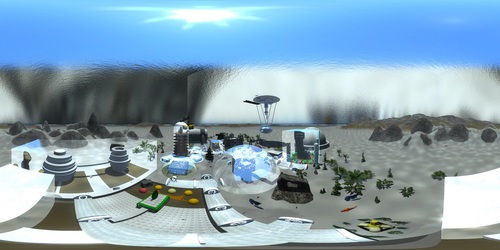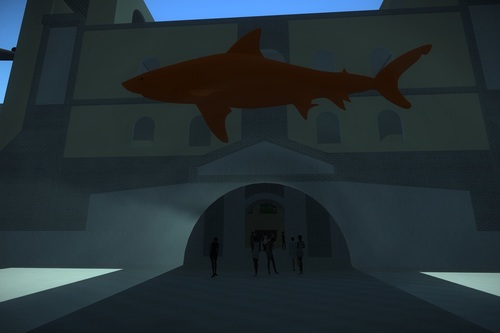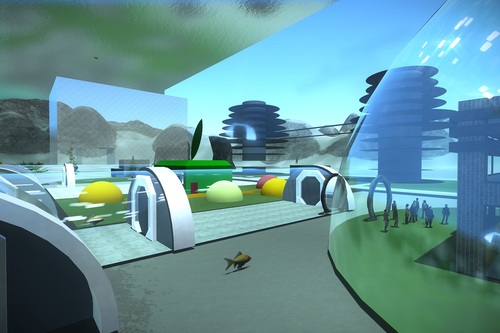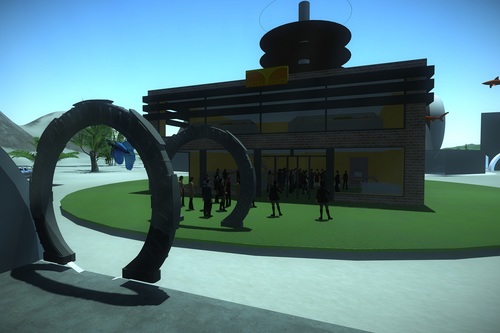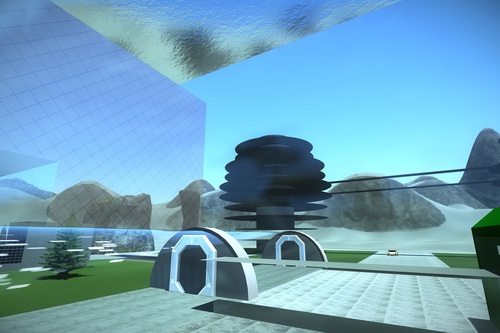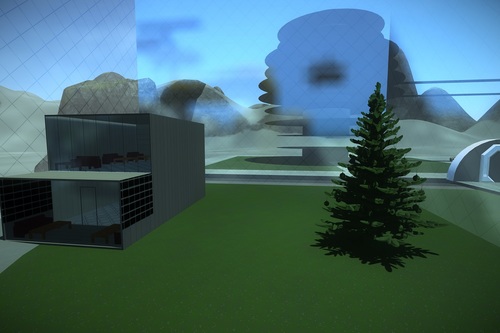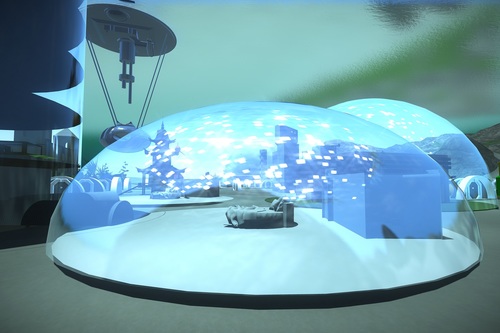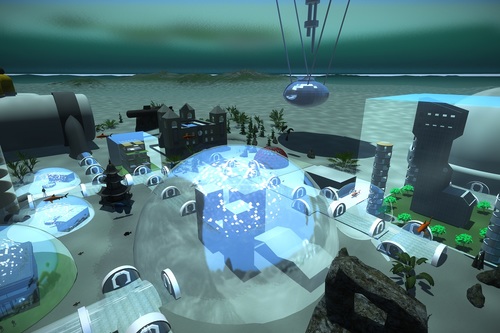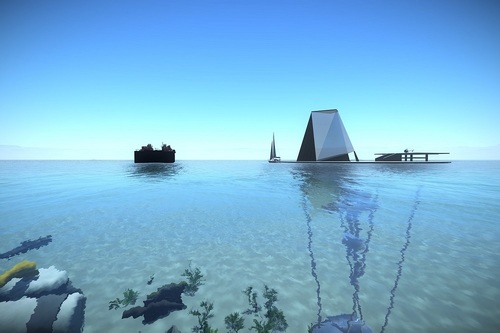- Programmes in English 2025/2026
- Admission 2024/2025 Scholarships
- For exchange students
- Free Movers
- Transfer studies
- Erasmus+ studies and traineeships
- Mentor programme
- Student testimonials
- Accommodation
- Career Services
- Medical Care
- Immigration Regulations
- Leisure and Student Activities
- Useful information
- VILNIUS TECH for Creators of Tomorrow
- Mental and spiritual support
- Representatives Abroad
- Contacts
- Computer Engineering
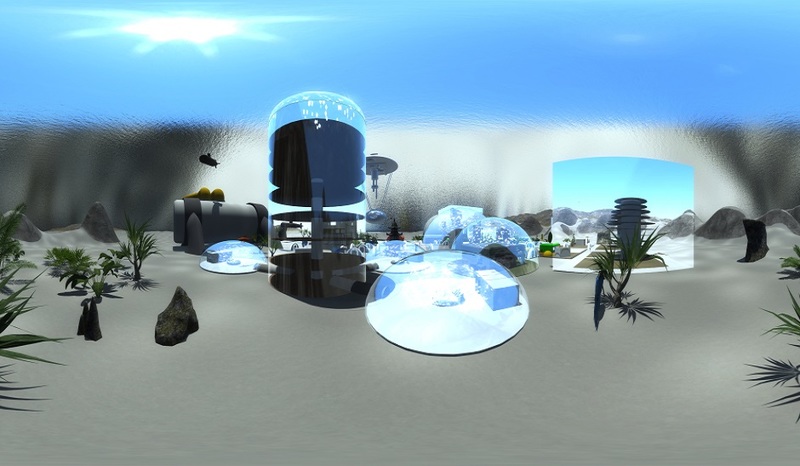
2019-12-16
VGTU lyceum pupils create underwater virtual city
Cooperation on science projects is ongoing between Vilnius Gediminas Technical University (VGTU) and the Faculty of Fundamental Sciences through VGTU’s engineering lyceum.
VGTU lecturer, Edgaras Timinskas, and Class 12 pupils, have succesfully designed a virtual city, this time an imaginary city on the seabed. It’s the third time we have worked on projects such as this, the aim being to encourage schoolchildren to develop their design skills and explore practical possibilities.
Working in teams, the first step was to decide what buildings would be needed. Each team selected one building, and then worked with their concept during the semester. The task included describing in detail the purpose of the building, its form, and finding similar buildings at home and abroad from which they could draw inspiration. From here, each team created a digital model of the building, drew up sketches and designed their 3-D model, keeping in mind that the structure would need to be absolutely watertight and able to withstand water pressures experienced on the sea floor. On this occasion they chose the following buildings: a submarine repair garage, a hostel, a club, Parliament, a hotel, SPA Centre, a supermarket, Plantation, Café, Central Park, stadium, office building with garages, plant shop, cinema, underwater power plant and a customer contact center.
Creating their city required them to use new types of materials that don’t actually exist right now. The idea was that the new materials could be used to construct unusual forms of underwater structures.
During the semester, pupils identified the tools for building information modeling (BIM) projects, using a simplified model of the chosen building. All of the modeling tools used are available online via the Internet browser Autodesk Formi, which meant that pupils could continue to work on their project at VGTU facilities, at school, and at home. The knowledge and skills gained from previous lectures helped many pupils to further enrich their projects.
For design,Tinkercad, Solidworks, Blender program packages were used to great effect. Teamwork was vital in the design of the structures because every member made an equal contribution to every part of the project – in modelling, preparing the explanatory notes, and presentation.
At the end of the semester, every building project across the different teams was connected in one model using Bentely Systems LumenRT. The city was created and prepared for virtual reality (VR). It was during the final class that pupils visited VGTU’s "LinkMenų fabrikas" virtual reality lab where each team presented their project and explained how they went about the task. During the presentation, pupils and teachers were able to walk inside the virtual city. You can view the images and presentation memories in Photo Gallery. You can also view a video of virtual city.
https://www.facebook.com/watch/?v=600222954060319
VGTU lecturer, Edgaras Timinskas, and Class 12 pupils, have succesfully designed a virtual city, this time an imaginary city on the seabed. It’s the third time we have worked on projects such as this, the aim being to encourage schoolchildren to develop their design skills and explore practical possibilities.
Working in teams, the first step was to decide what buildings would be needed. Each team selected one building, and then worked with their concept during the semester. The task included describing in detail the purpose of the building, its form, and finding similar buildings at home and abroad from which they could draw inspiration. From here, each team created a digital model of the building, drew up sketches and designed their 3-D model, keeping in mind that the structure would need to be absolutely watertight and able to withstand water pressures experienced on the sea floor. On this occasion they chose the following buildings: a submarine repair garage, a hostel, a club, Parliament, a hotel, SPA Centre, a supermarket, Plantation, Café, Central Park, stadium, office building with garages, plant shop, cinema, underwater power plant and a customer contact center.
Creating their city required them to use new types of materials that don’t actually exist right now. The idea was that the new materials could be used to construct unusual forms of underwater structures.
During the semester, pupils identified the tools for building information modeling (BIM) projects, using a simplified model of the chosen building. All of the modeling tools used are available online via the Internet browser Autodesk Formi, which meant that pupils could continue to work on their project at VGTU facilities, at school, and at home. The knowledge and skills gained from previous lectures helped many pupils to further enrich their projects.
For design,Tinkercad, Solidworks, Blender program packages were used to great effect. Teamwork was vital in the design of the structures because every member made an equal contribution to every part of the project – in modelling, preparing the explanatory notes, and presentation.
At the end of the semester, every building project across the different teams was connected in one model using Bentely Systems LumenRT. The city was created and prepared for virtual reality (VR). It was during the final class that pupils visited VGTU’s "LinkMenų fabrikas" virtual reality lab where each team presented their project and explained how they went about the task. During the presentation, pupils and teachers were able to walk inside the virtual city. You can view the images and presentation memories in Photo Gallery. You can also view a video of virtual city.
https://www.facebook.com/watch/?v=600222954060319












